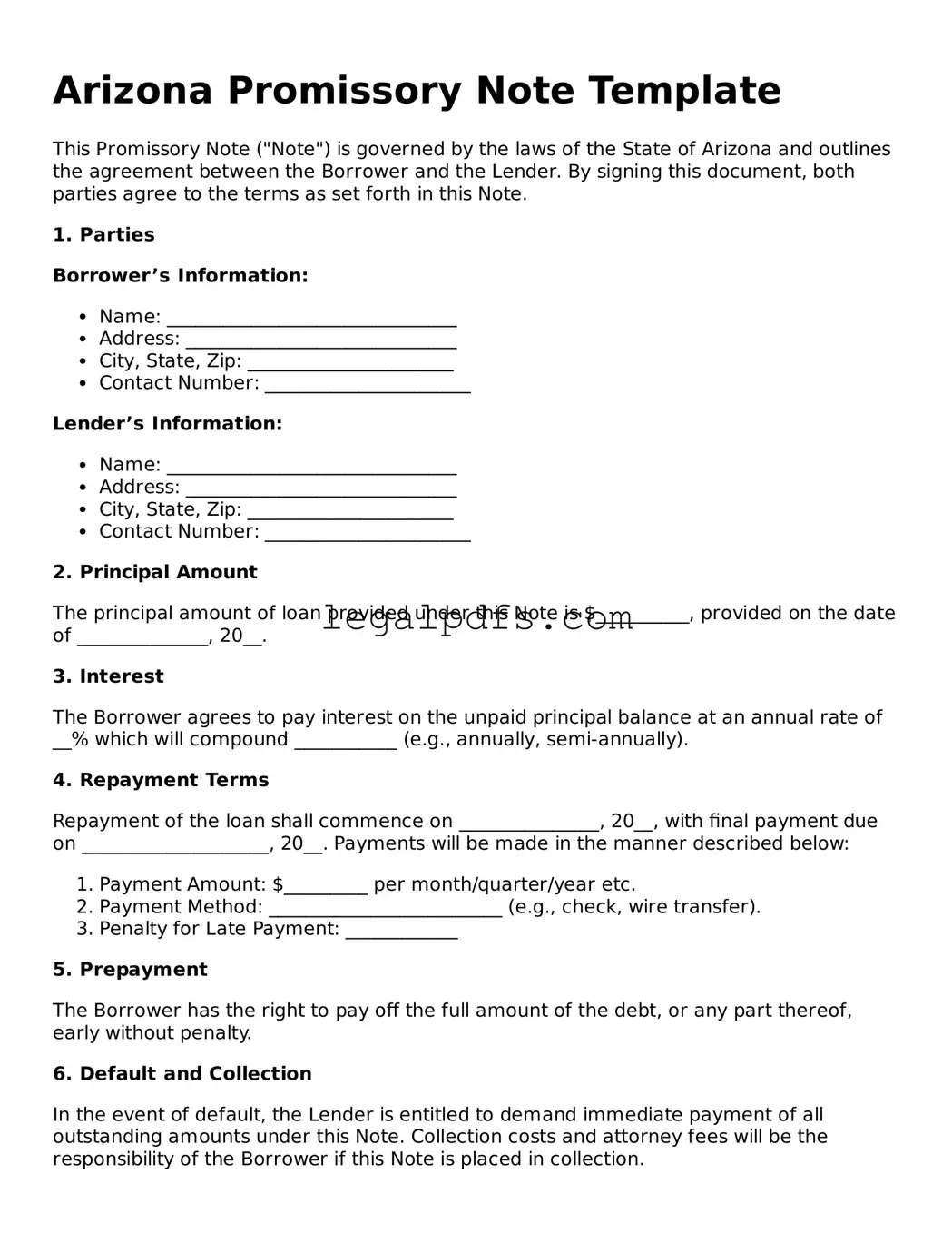Arizona Promissory Note Template
This Promissory Note ("Note") is governed by the laws of the State of Arizona and outlines the agreement between the Borrower and the Lender. By signing this document, both parties agree to the terms as set forth in this Note.
1. Parties
Borrower’s Information:
- Name: _______________________________
- Address: _____________________________
- City, State, Zip: ______________________
- Contact Number: ______________________
Lender’s Information:
- Name: _______________________________
- Address: _____________________________
- City, State, Zip: ______________________
- Contact Number: ______________________
2. Principal Amount
The principal amount of loan provided under this Note is $__________, provided on the date of ______________, 20__.
3. Interest
The Borrower agrees to pay interest on the unpaid principal balance at an annual rate of __% which will compound ___________ (e.g., annually, semi-annually).
4. Repayment Terms
Repayment of the loan shall commence on _______________, 20__, with final payment due on ____________________, 20__. Payments will be made in the manner described below:
- Payment Amount: $_________ per month/quarter/year etc.
- Payment Method: _________________________ (e.g., check, wire transfer).
- Penalty for Late Payment: ____________
5. Prepayment
The Borrower has the right to pay off the full amount of the debt, or any part thereof, early without penalty.
6. Default and Collection
In the event of default, the Lender is entitled to demand immediate payment of all outstanding amounts under this Note. Collection costs and attorney fees will be the responsibility of the Borrower if this Note is placed in collection.
7. Governing Law
This Note shall be governed under the laws of the State of Arizona, without regard to its conflict of law provisions.
8. Signatures
This Note will not be binding until signed by both the Borrower and the Lender. Signatures below indicate the agreement to all terms and conditions outlined in this Arizona Promissory Note Template.
Borrower's Signature: ______________________ Date: ______________
Lender's Signature: ______________________ Date: ______________
